I have a section of ridge rest sleeping pad I want to glue onto the bucket seat on my Wenonah Voyager and was just looing for tips.
I planned on contact cement, when it gets tacky, lay it on the seat and sit on it. Maybe use packing tape every few inches around the perimeter to get keep the edges in place, then trim it up with scissors or box cutter.
Anyone have any suggestions?
Here’s one way.
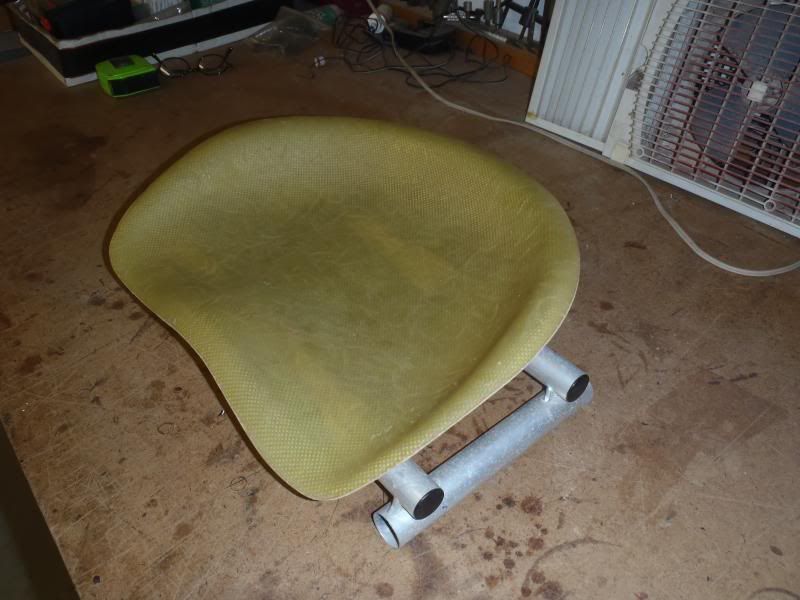
I make a paper template for the seat. It is easier to get the actual curves of the seat pan into a template if you use notebook or printer sized paper instead of one big sheet. I weight that butt depression template down and trace around the outer lip of the seat pan.
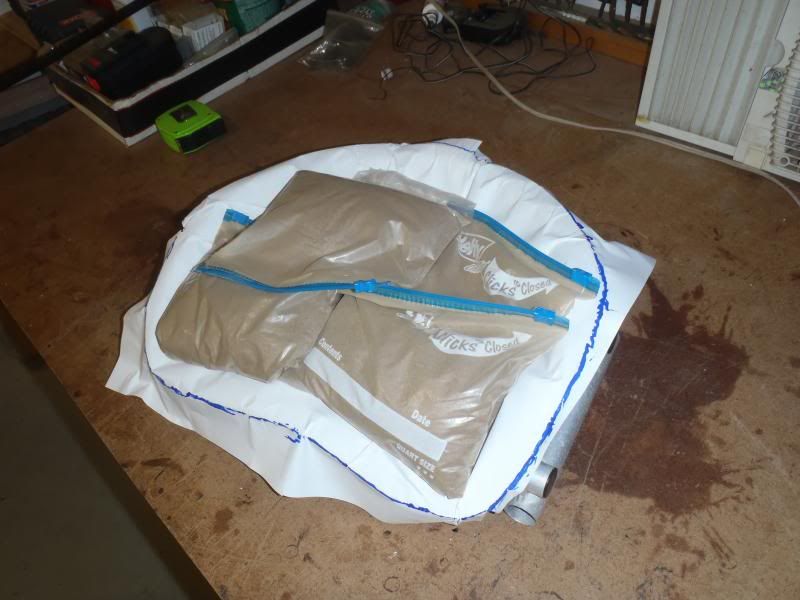
Take that template and trace an extra inch or so around the perimeter.
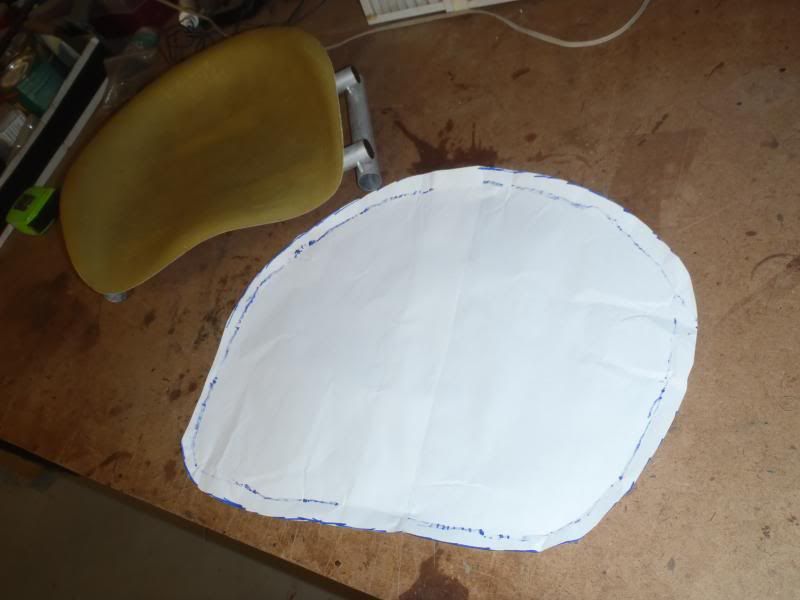
Transfer that to the Ridgerest pad and cut out. Clean the seat pan with alcohol to remove any contaminates.

Permeable surfaces like foam or minicel need multiple coats of minicel. I usually do three with dry time in between. The plastic or glass seat pan only needs two (the contact cement doesn’t soak in on that surface). I do a coat on both surfaces, a second on just the foam and another coat on both surfaces, with dry times in between.
BTW – The RidgeRest pad will want to curl up after you brush it with contact cement. I anchor it in place with pushpins.
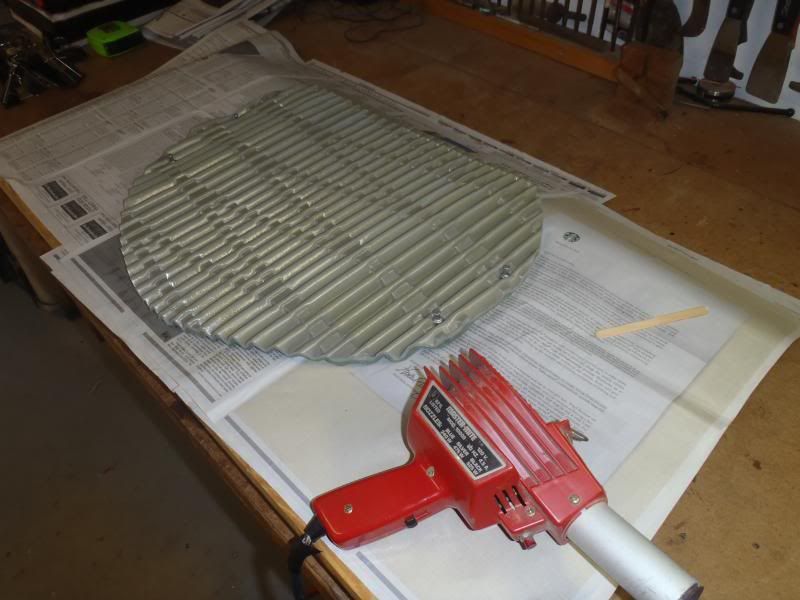
The last contact cement coat is the critical one. You want both surfaces in the narrow window between just barely tacky and fully dry. Flash both seat and pad with a heat gun or hair drier; that will help dry to too wet areas and reactivate the too dry spots.
And then the REALLY critical part, putting the foam pad in place. You only get one shot at it, ‘cause once the surfaces touch they’re stuck. Some things that help get that one-shot alignment correct:
Do some dry test fit practice runs before you paint on the contact cement, so you know just how and where you plan to hold and apply the foam.
Have another pair of hands (and eyes) to help. You need to hold the foam bent into a seat-matching complex curve to some degree, and start the contact in the center. That is hard to do with just two hands.
When I don’t have helping hands available I sometimes cut the pad in two along the center keel line, mark that seam on the seat and install one half at a time. That is also an option if your scrap of Ridgerest isn’t large enough to cover the seat in one piece.
I trim the edge excess with a razor blade and clamp the entire perimeter. Binder clips are handy for that (and lots of other odd shop chores).

And, finally, weigh the edge-clipped pad with sandbags and walk away for a day.
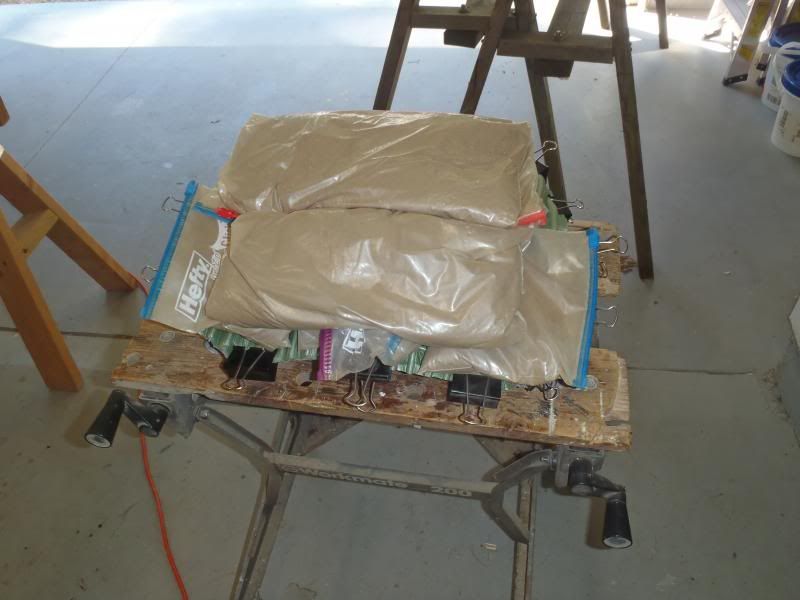
Almost finally. I finish up by running a bead of Plumber’s Goop around the perimeter pad-to-seat edge. That seems to help keep the pad edges intact and resistant to peeling or lifting.
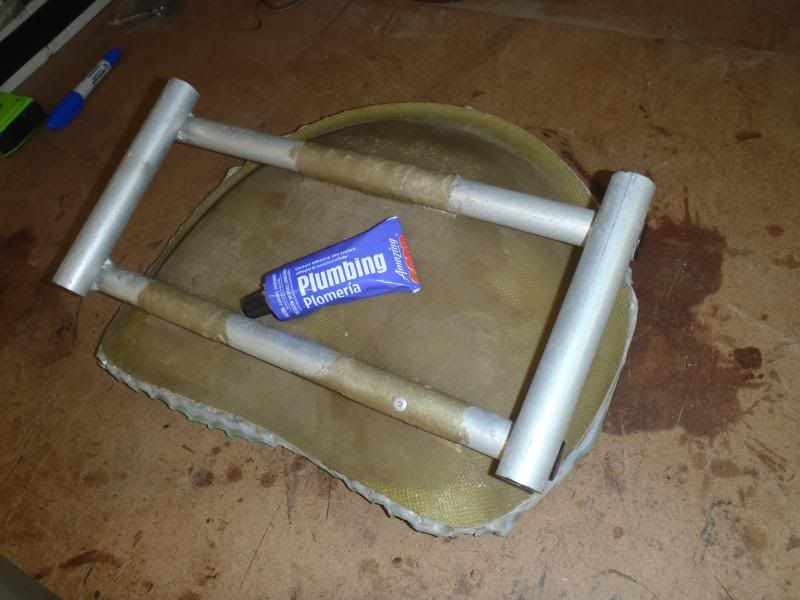
I had a foam seat glued into an old racing canoe I had years ago and truly enjoyed it. While it was a permanent addition to the seat, I was never uncomfortable paddling; even after 10+ hours in the seat.
That has been my experience as well. We have a couple of different bucket seat pads and I have eventually added RidgeRest foam to every boat with a bucket seat. It’s always there, I don’t need to remember to bring the pad or install it before launching and it absolutely does not slip or slide on the seat (a problem with some auxiliary pads)








